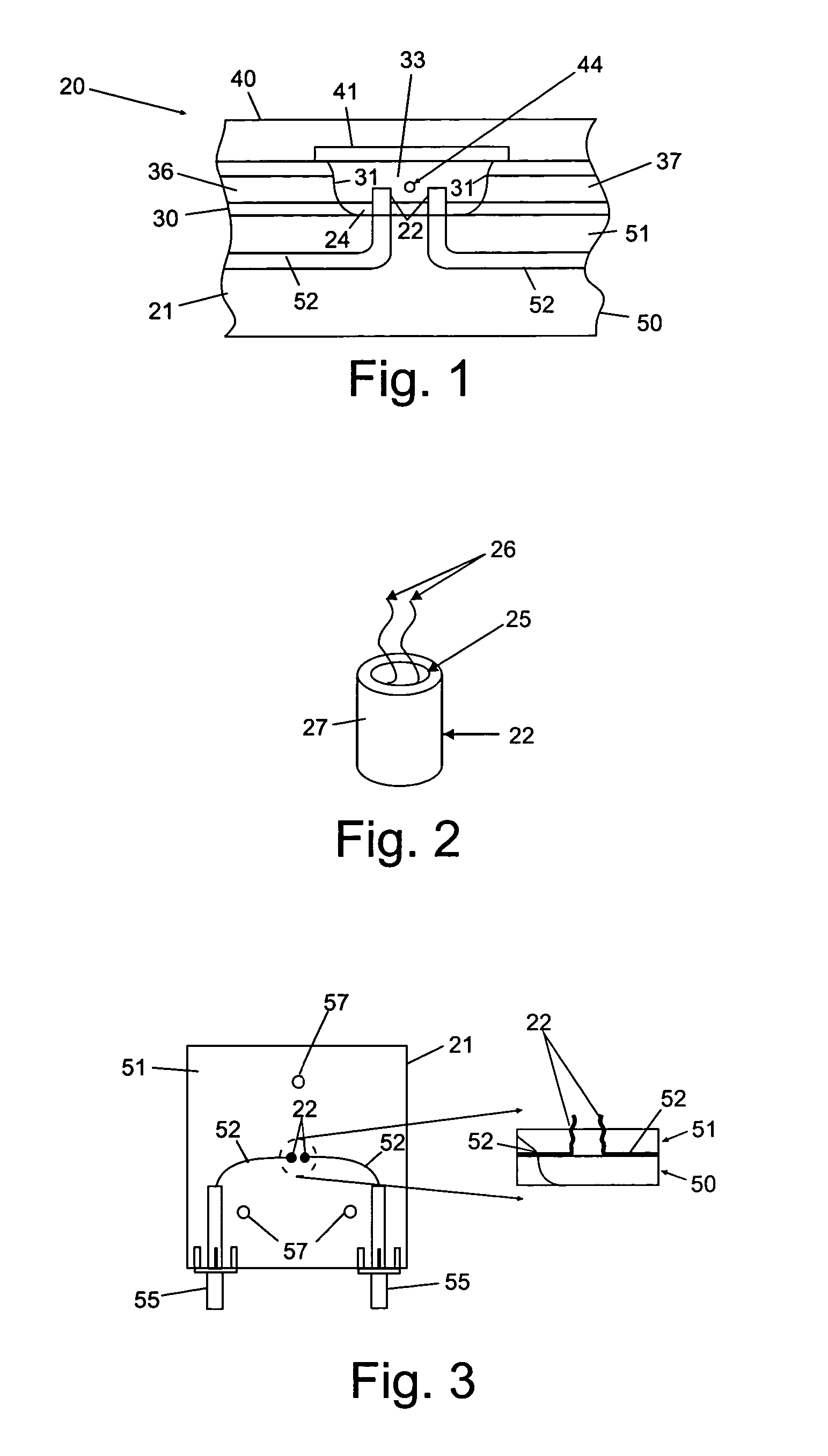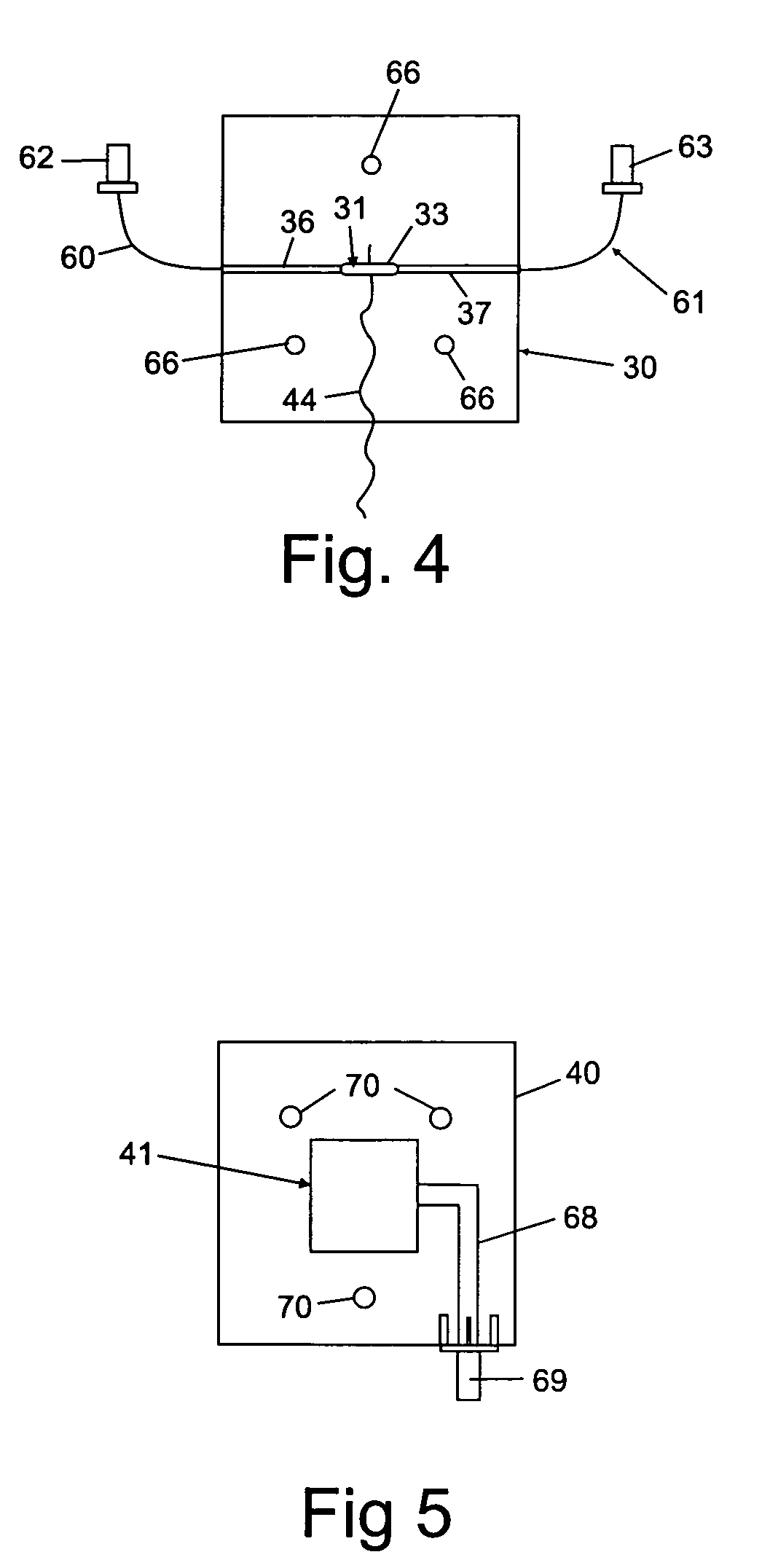Direct radio-frequency detection of nucleotide hybridization at microelectrodes
a radiofrequency detection and nucleotide technology, applied in the field of biosensors, can solve the problems of increasing the complexity and cost of detection techniques, limiting response time and sensitivity, and current can be difficult and unreliable, so as to achieve high-sensitivity detection of hybridization events and increase the mixing and modulation of high-frequency signals.
- Summary
- Abstract
- Description
- Claims
- Application Information
AI Technical Summary
Benefits of technology
Problems solved by technology
Method used
Image
Examples
Embodiment Construction
[0016]With reference to the drawings, an exemplary flow cell structure that may be utilized in a radio frequency detection apparatus is shown generally at 20 in FIG. 1 in cross-section. The flow cell 20 includes a base 21 with working electrodes 22 (two shown), mounted therein and extending above a top surface 24 of the base into a region in which a sample fluid may be held. As best illustrated in FIG. 2, the exposed portions of the working electrodes 22 include an exposed terminal surface 25 (e.g., having a gold coating, as discussed below) on which the nucleotide (illustratively shown at 26) may be immobilized. The central core conductor (e.g., of gold) which terminates on the surface 25 is preferably insulated from the surrounding sample by a layer of insulation 27 (e.g., polyimide)
[0017]The flow cell 20 further includes an intermediate layer 30 which includes interior walls 31 defining the peripheral walls of a flow cell chamber 33, an inlet channel 36 extending from an inlet en...
PUM
| Property | Measurement | Unit |
|---|---|---|
| frequency | aaaaa | aaaaa |
| frequency | aaaaa | aaaaa |
| area | aaaaa | aaaaa |
Abstract
Description
Claims
Application Information
 Login to View More
Login to View More - R&D
- Intellectual Property
- Life Sciences
- Materials
- Tech Scout
- Unparalleled Data Quality
- Higher Quality Content
- 60% Fewer Hallucinations
Browse by: Latest US Patents, China's latest patents, Technical Efficacy Thesaurus, Application Domain, Technology Topic, Popular Technical Reports.
© 2025 PatSnap. All rights reserved.Legal|Privacy policy|Modern Slavery Act Transparency Statement|Sitemap|About US| Contact US: help@patsnap.com



